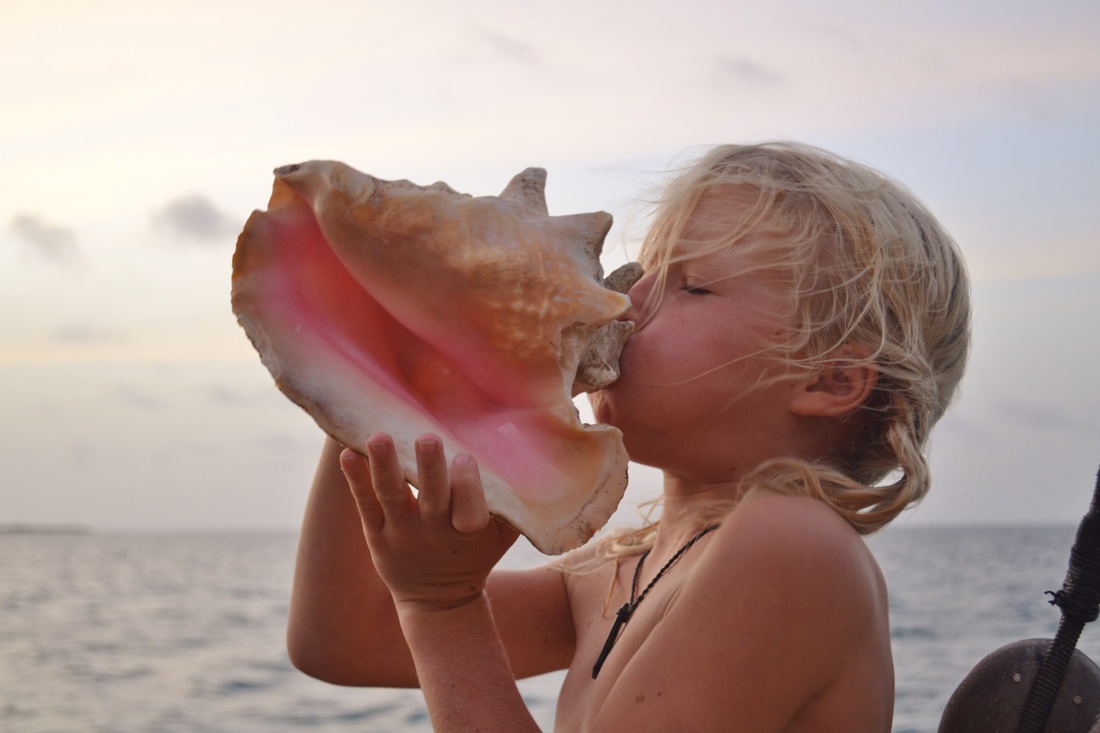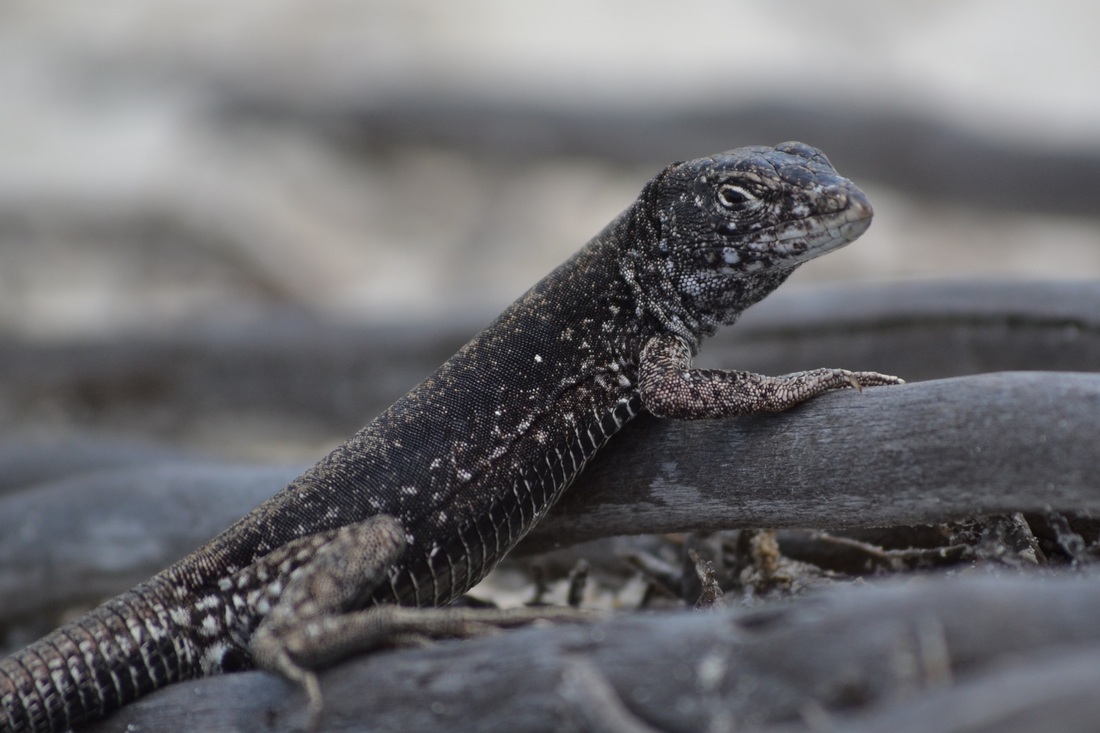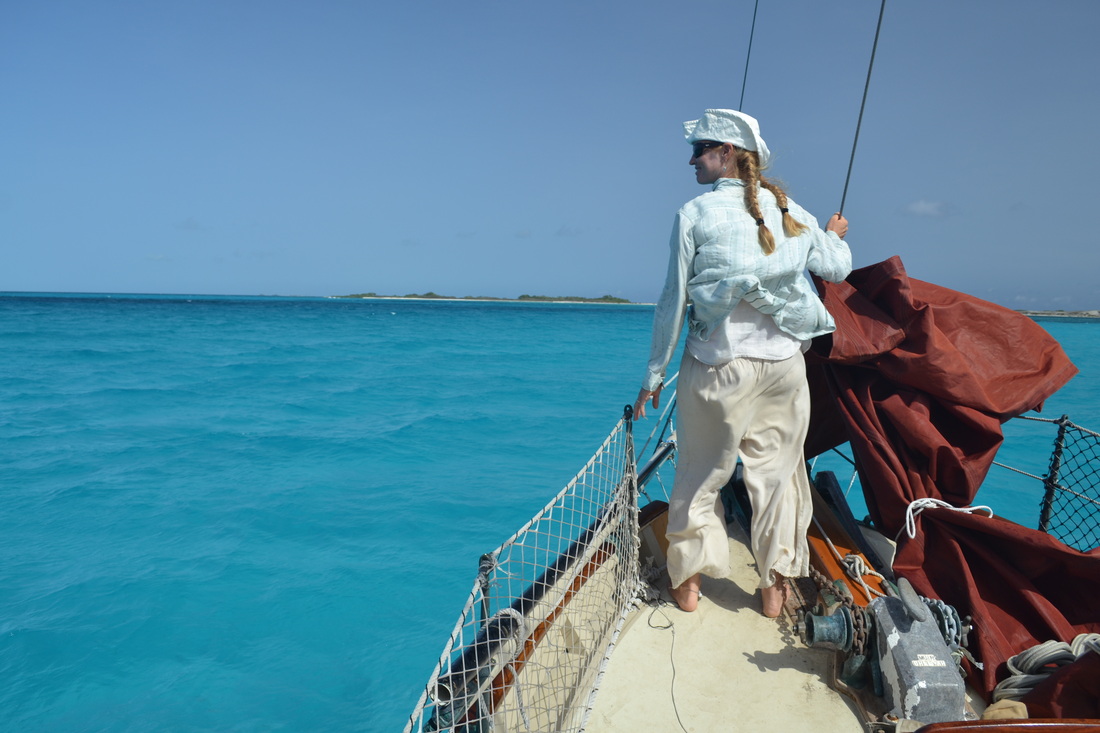
I was surprised how nervous I was to enter the pass but I guess it has been a while since we explored coral atolls and their often treacherous passes. Fortunately, by shaking out a reef and putting up VIXEN's big jib we made it to the pass with plenty of overhead light. The pass itself proved to be wide and deep even if it was charted about a third of a nautical mile south of its actual position.
We were also on edge because we planned to visit this remote outpost of Venezuela and not officially enter the country. In recent years Venezuela has been abandoned by cruising sailboats because of piracy in the offshore islands but I had heard that Los Roques and Las Aves were far enough from the mainland to be safe. We hoped this would be the case.
Once through the pass we sailed up the inside of the reef navigating by eye among the coral heads and came to anchor behind a small mangrove covered island. So far it seemed like paradise – clear warm water, a protected anchorage over 20 feet of fine white sand.
The next day we explored the reef to windward. Occasionally a motorboat came through the pass and headed to Grand Roque, 10 miles to the north where I understood there was some kind of a resort. We planned to avoid that whole north eastern area and stay under the radar of the authorities. Luckily nobody paid any attention to us.
On our third day we decided to sail 25 miles through the center of the archipelago west to Cayo de Agua another small atoll. This was all to be through uncharted waters between the reefs just with eyeball navigation and a copy of a small sketchchart someone had given us in Virgin Gorda. It was blowing 20 to 25 knots so we raised just the staysail and headed off downwind. It reminded us of Fiji: running down between uncharted coral heads and climbing the ratlines so as not to enter a deadend channel. It was pristine Caribbean sailing with turtles, pelicans and lots of blue-footed boobies and terns. In my opinion, having only spent two seasons in the Caribbean, this sail through the heart of Los Roques is the crown jewel of the whole Caribbean. Someone told me it was like the Tobago Cays 50 years ago but I would say it is much better than that partly because Los Roques covers such a large area compared to the Tobago Cays.
At the end of the day we anchored in the lee of Cayo de Agua. Soli and I went ashore to explore this deserted island. Our best find was a pile of bleached pelican bones which we examined carefully and took back to show Tiffany and Seffa.
There were a couple of speedboats that came down from Grand Roque but they left by the end of the day and we were all alone. I read in a guide book that there actually was a hurricane in Bonaire in 1831. As I went to sleep – anchored in the lee of this windy remote island -- I couldn't help thinking that we hadn't had any weather information for the last few days. In fact, the wind picked up that night and I worried about our anchor and a sandbar just to leeward. Maybe that 96L took a turn south and was the once-in-200-year hurricane to reach Bonaire? Well, no one would ever know what had happened to us if it was. With that discomforting thought and a look out into the pitch black night I went back to sleep. In the morning everything looked better. The wind had gone down and as a testament to our 45 pound CQR and 125 feet of 3/8 inch chain we hadn't moved at all.
After breakfast we had another expedition ashore with a picnic under a lone palm tree. We could see pits where fishermen had dug for fresh water which gave the island its name. In the afternoon a chartered catamaran anchored next to us and we rowed over to say “Hello” and get the weather. There was a captain aboard who was taking some guests around the islands. He asked if there was anything we needed, slipped Solianna a bottle of cold water, gave me the weather (which promised to be stable) and after an hour they had pulled up the anchor and were gone.
We planned to carry on to Las Aves, 30 miles to leeward the next day but this was not to be; Seffa had a skin condition that had started as a heat rash but was growing each day. Bonaire was just 80 miles downwind so we decided to skip Las Aves and take Seffa into Bonaire to have a doctor look at her skin.
The wind and swell had gone down and VIXEN had a beautiful downwind run. At 4am Tiffany spotted the lighthouse off Bonaire's southern point and by 7am we were on a mooring off of the main town of Kralendijk.
Just as we were rowing ashore, our friend Patrick, the only person we knew on Bonaire, swam by the boat and offered to take Seffa to his doctor. By the afternoon we had a prescription and Seffa's skin now seems to be on the mend.
Bonaire is world known for its diving. There is great snorkeling right off of VIXEN's mooring. It does seem to be some of the best visibility I have seen anywhere in the world. We plan to be here for about ten days and then look for a weather window to sail down to Columbia as we make our way towards the Panama Canal.





 RSS Feed
RSS Feed
